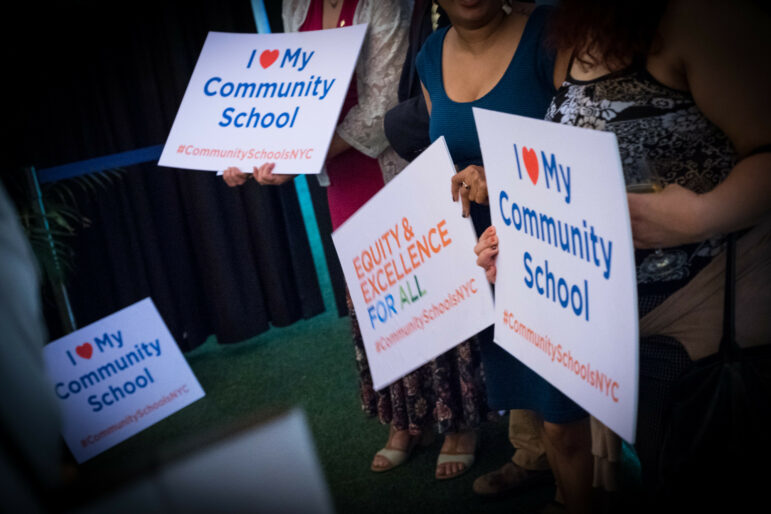“These schools represent an inclusive model of education, one that seamlessly integrates schools with the broader community network and thus merits a dedicated, reliable funding stream.”

Edwin J. Torres/Mayoral Photography Office
In less than a decade, the 421 community schools in New York City have become a testament to innovation and a commitment to holistic education—a vision that has delivered results for New York City Public Schools. These schools stand as vibrant hubs that extend learning beyond the classroom, offering after-hours programming for students, families and neighbors, as well as summer activities and crucial health services directly in the school environment.
The evidence speaks volumes: Community schools have achieved nearly 5 percentage points higher in graduation rates compared to their counterparts. Student engagement has soared and behavioral issues have markedly decreased.
Perhaps most impressively, chronic absenteeism in these schools has been turned around. This is an issue that has plagued schools across the city and nation since the pandemic. Yet at one community school, Mosaic Prep Elementary in East Harlem, attendance has gone up by 10 percentage points even as that school began serving a large number of newly arrived migrant families—a challenge that often decreases attendance.
Community schools like Mosaic do this by taking ownership of chronically absent children. These schools build strong, trusting relationships with students and their families with caring adults and advocates who ensure their needs are met. They support students’ social-emotional and academic learning, helping them overcome challenges in the moment without disengaging from school. And they give students fun reasons to show up, from after-school activities like studio art and a Lego robotics program to incentive programs like “AttenDances” for students with strong records.
City Year New York, the nonprofit I am privileged to lead, continues to invest in our community schools. Still, the looming end of federal pandemic aid—which has been a primary funding source for community schools—poses a challenge to the sustainability of these programs.
The city’s current financial pressures, including those arising from the migrant crisis, necessitate fiscal prudence. But it is vital to recognize that the continued investment in community schools is not merely a line item—it’s an investment in the future of our children and our city.
The value of community schools extends beyond academic achievement. It’s also about nurturing resilient, thriving communities. Parents and guardians are understandably apprehensive about potential disruptions to services such as counseling, clinics and adult education—services that fortify entire neighborhoods against societal challenges.
The question is not whether we can afford to maintain and grow our commitment to community schools. Rather, can we afford not to? These schools represent an inclusive model of education, one that seamlessly integrates schools with the broader community network and thus merits a dedicated, reliable funding stream.
City Year New York is contributing constructively to this conversation. In November, we unveiled a Community Schools Playbook, generously backed by the Lego Foundation, to offer a blueprint for the successful implementation of community school principles nationwide.
Even as New York City confronts fiscal constraints, we must not overlook the achievements and potential of community schools. Youth and families stand to gain in both the near and long term from the effort to focus on the whole school and the whole child.
Investing in success requires capital. It’s imperative to remember that the cost of underinvestment—especially when we have evidence of what works—is far higher. Our collective efforts can ensure that community schools remain a vibrant part of New York City’s educational and social landscape. Let’s choose to invest wisely and wholeheartedly in our children’s future.
Quamid Francis serves as the executive director and senior vice president of City Year New York.








